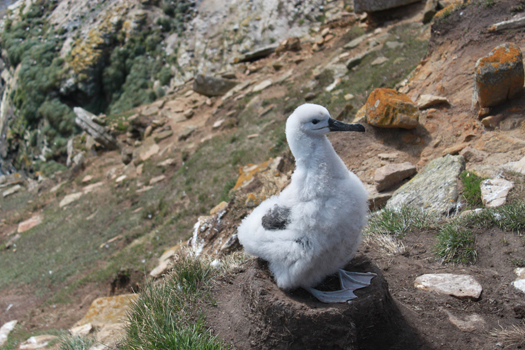Blood chemical reference values and variations in them in long-lived endangered birds are of metabolic, veterinary, ecological and/or taxonomic interest. In the present study, such reference values are provided and the influence of sex, age, and nest location are tested on up to 11 plasma values in nesting black-browed albatrosses (Thalassarche melanophrys) sampled in 2015 on the Falkland Islands. Results showed that differences between sexes were not significant for any of the parameters tested. Insignificant differences in metabolically related parameters were found in nestlings being raised in the middle of nesting colonies and those being raised at the edges of the colonies indicating that nest location did not affect the nutritional status or health of young, developing albatrosses. Conversely, age had a significant effect on a number of metabolites, inorganic ions and enzymatic activity. In particular, age-related differences in glucose, triglyceride, urea, and uric acid suggested that the relative metabolic rate was higher in nestling than in adult albatrosses. informacion[at]ebd.csic.es: Ferrer et al (2017) Factors affecting plasma chemistry values of the black-browed albatross Thalassarche melanophrys. Polar Biol DOI 10.1007/s00300-017-2075-6
http://link.springer.com/article/10.1007/s00300-017-2075-6

 Las altas temperaturas están provocando que las lagunas y las marismas de Doñana pierdan agua rápidamente
Las altas temperaturas están provocando que las lagunas y las marismas de Doñana pierdan agua rápidamente




